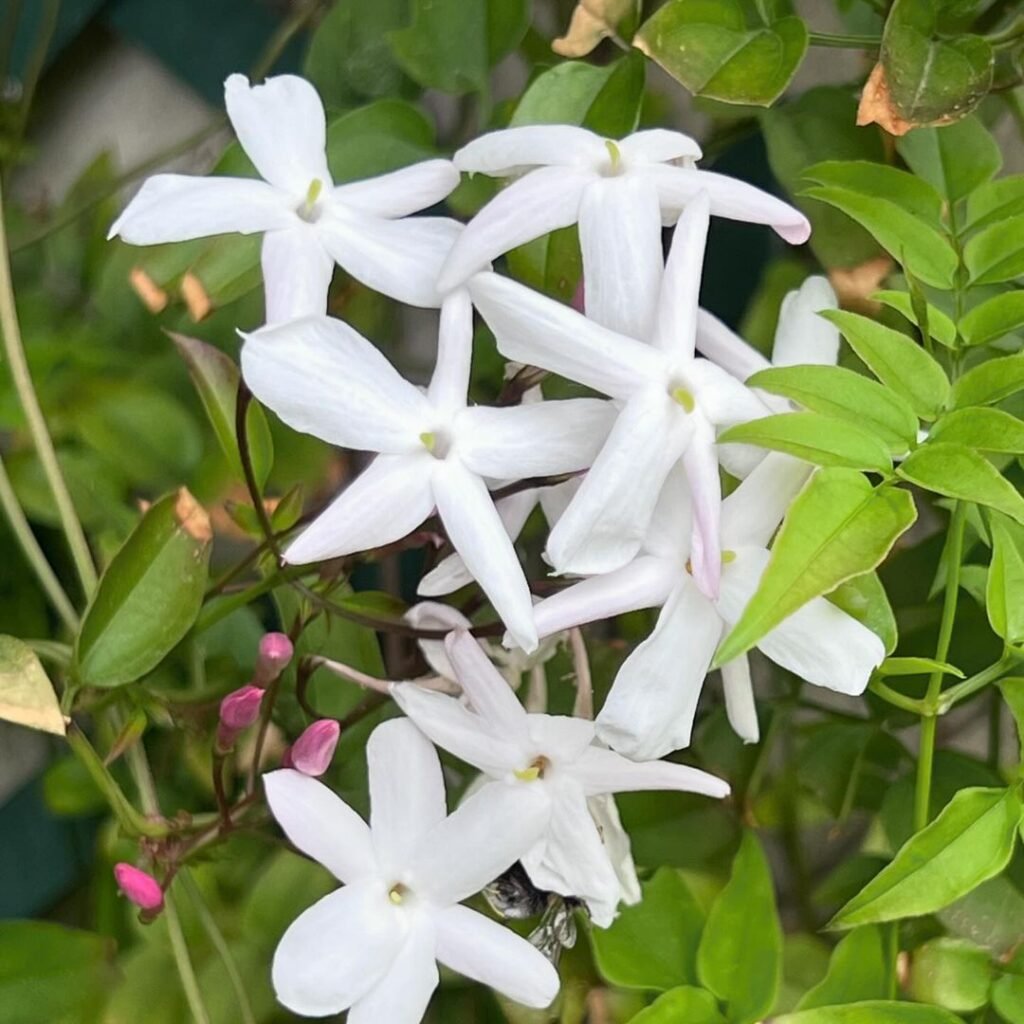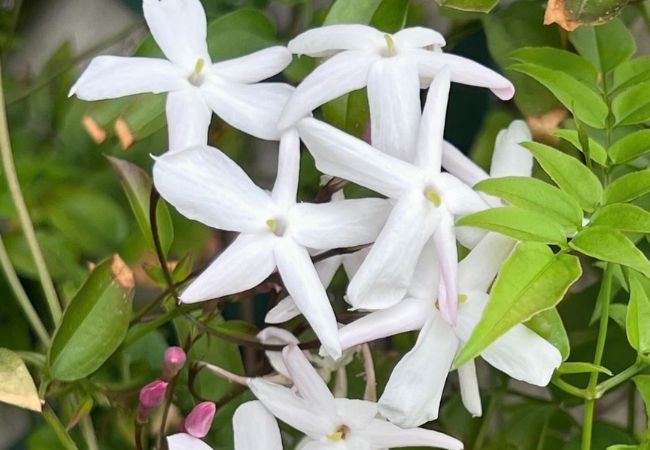Explore the beauty of Winter Star Jasmine, a cold-hardy flowering vine that blooms in winter. Learn how to grow and care for this fragrant plant, perfect for adding life to your garden or home during the colder months.
Discover the unique charm of Winter Star Jasmine, a resilient flowering plant that brings life and fragrance to gardens during the colder months. This hardy species offers a refreshing twist on traditional jasmines, blooming when most other plants are dormant.
Here’s an information chart for Winter Star Jasmine (Jasminum nudiflorum):
| Category | Information |
|---|---|
| Botanical Name | Jasminum nudiflorum |
| Common Name | Winter Star Jasmine |
| Plant Type | Deciduous shrub |
| Hardiness Zone | Zones 6-9 |
| Sun Exposure | Full sun to part shade |
| Soil Type | Well-draining, fertile |
| Watering | Moderate |
| Growth Habit | Arching, sprawling |
| Height/Spread | 3-10 feet tall, spreads 3-6 feet |
| Special Features | Yellow flowers in late winter to early spring, green stems year-round, suitable for ground cover or cascading over walls |
What is Winter Star Jasmine?

Winter Star Jasmine, scientifically known as Jasminum polyanthum, is a twining evergreen vine that produces fragrant white flowers tinged with pink. Unlike its summer-blooming relatives, this jasmine flowers in late winter to early spring.
Origin and Characteristics
Native to China and Myanmar, Winter Star Jasmine has become popular in temperate climates worldwide. Key features include:
- Dark green, glossy leaves
- Fragrant white flowers with pink buds
- Winter-blooming habit
- Cold-hardy nature
How to Grow Winter Star Jasmine
Planting:
- Choose a sheltered spot with full sun to partial shade
- Ensure well-draining soil
- Plant in spring after the last frost
- Space plants 3-5 feet apart
Care Tips:
- Water regularly, especially during dry spells
- Fertilize lightly in spring with a balanced, slow-release fertilizer
- Prune after flowering to control growth and shape
For comprehensive care instructions, visit the Royal Horticultural Society’s growing guide.
Uses in the Garden
- Climbing Plant: Train it up trellises, fences, or arbors for winter interest.
- Container Plant: Ideal for patios and conservatories in colder regions.
- Indoor Plant: Can be grown indoors near a sunny window.
- Winter Fragrance: Plant near entrances or walkways for a sweet winter scent.
Benefits of Winter Star Jasmine
- Winter Interest: Provides color and fragrance when most gardens are dormant.
- Attracts Pollinators: Early blooms support winter-active pollinators.
- Versatility: Suitable for both indoor and outdoor cultivation.
- Air Purification: Like many plants, it can help improve indoor air quality.
Common Issues and Solutions
- Frost Damage: Protect plants in severe cold. Consider cold frames in harsh climates.
- Lack of Blooms: Ensure the plant receives enough light and a period of cool temperatures.
- Pests: Watch for spider mites and whiteflies. Treat with insecticidal soap if necessary.
For more information on plant health, consult the USDA’s Plant Health page.
Interesting Facts
- In its native habitat, it can climb up to 20 feet high.
- The flowers are often used in perfumery due to their strong, sweet scent.
- It’s sometimes called “Pink Jasmine” due to its pink buds, despite the white flowers.
Winter Star Jasmine offers a unique opportunity to enjoy fragrant blooms during the coldest months of the year. Its adaptability to both indoor and outdoor environments makes it a versatile choice for gardeners in various climates. Whether you’re looking to add winter interest to your garden or bring a touch of nature indoors, Winter Star Jasmine is an excellent choice.
For more gardening tips and plant care guides, visit usagardenhub.com.







One comment on “Winter Star Jasmine : A Cold-Season Beauty”